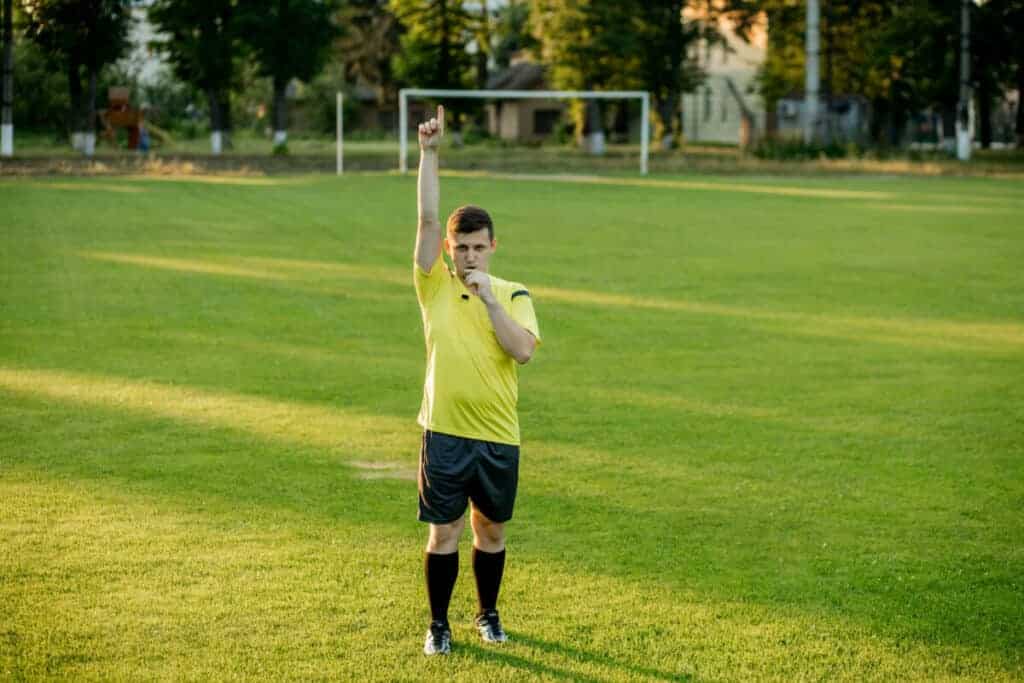why does soccer clock count up
You’ve probably noticed that soccer games use a clock that counts up rather than down. This is much different than other team sports that start at the allotted time and count down to zero. Why are soccer games unique in counting down?

Soccer clocks count up to make timekeeping easier for a single referee while he/she is also making calls to the field. It also allows the extra time during which the game was stopped to be added to the total time. Plus, it makes time tracking easier for a game that is split into two halves.
To learn more about why soccer games are tracked differently than other sports, continue reading!
Soccer clocks count up to account for stoppages
In a game of soccer, there are many reasons that the game may need to stop. The game may be stopped because a team or team member needs to be penalized, the ball was kicked too far out of bounds, a game rule had been broken, for the players to have drink breaks, a player is injured and needs assessment or removal from the game, a player needs to be substituted, and more. These stoppages can happen multiple times in one game, or they can happen only once throughout an entire half.

Having a soccer clock count up helps the referee account for those stoppages. The clock will continue to count up from 0 during the first half and continue counting up just like a regular analog clock past the allotted 45 minutes for that half. In the second half, the time will begin at 45 and go past 90 if there are any stoppages. (Source)
The referee will keep track of the number of minutes that the game was stopped for during each half, then add those minutes to the time at the end of that half for the players to continue playing, making up for those lost minutes during stoppages.
This would be much more difficult to keep track of if the clock counted down. The stoppage time that is then added and played at the end of each half helps prevent players from purposefully causing stoppages and delaying the game from resuming if they are in the lead and want to give the other team less time to score goals.
Why does the clock keep running?
A soccer game is a total of 90 minutes long, split into two halves that are each 45 minutes long, plus an extra 15-minute half-time break between those two halves. At the start of the game, the clock will begin at 0 and count up to 45, but it doesn’t stop there if there are any stoppages. (Reference)
Instead, once the game has been played for 45 minutes for that first half, not including stoppages, the referee will count up how many minutes the game was stopped for and add those minutes to the end of the game. The clock continues counting for however many minutes were added.
Say, for example, a player was aggressive with an opponent and caused an injury. The injured player would need to be assessed, removed from the game, substituted, and the offender would need to either be penalized or removed from the game and substituted, all of which accounts for stoppage time.
The clock would continue to count up for say, 10 minutes during that stoppage, of which the referee will add an extra ten minutes to the end of the game, allowing players that extra time to score goals.
Once the clock reaches 45 minutes, the time stops, and the referee will blow the whistle and call out how much time is going to be added to that 45 minutes, accounting for the time that the game was stopped. The game will then resume and run until 55 minutes.
Once that time is allotted onto the clock, the game will proceed to its 15-minute half-time break, and once that is over, the amount of time added to the first half will be subtracted from the clock so it is then reverted back to 45 minutes. The second half of the game will thus continue at 45 minutes, counting up regardless of stoppages until it reaches 90 minutes, then the referee will add stoppages during that half as extra time at the end of the game.
Soccer games can be officiated by one referee
With the help of a clock that counts up, as well as the help of a referee’s own watch (which they will often stop every time there is a stoppage in the game), a soccer game only needs one referee to officiate the game.

Many games that use a countdown clock need more than one referee to make timekeeping and time tracking easier overall. But, because soccer is meant to be simple and accessible to anyone, only one person needs to keep track of time, and they’ll be able to do this while also making calls out during the game.
In more professional games, there is often an off-field assistant whose job is to keep track of time throughout the game so that the referee doesn’t have to worry about being a hundred percent accurate. This assistant will keep track of stoppages, when the game has reached its 45 or 90-minute mark, and how many minutes of extra time to add to the clock.
Using clocks that count up allows for soccer to be played anywhere in the world
Because soccer is a simple game that is played around the world, it is also very accessible to anyone around the world. The only thing players would need to be able to play soccer is a ball, as well as their field, and some way to mark where the goals are. Then, players (or if they have a designated referee) will just need an analog clock to keep track of the time. (Source)
This helps those in less privileged countries to play a game of soccer, as well as anyone who simply doesn’t have access to a timer that has a countdown feature. Most everyone has access to some sort of analog clock, and because time in soccer is tracked using a clock that counts up, anyone with an analog clock can keep time during a soccer game. This ensures that soccer remains a universal game and that anyone can play by the rules of the game while having fun at it.
